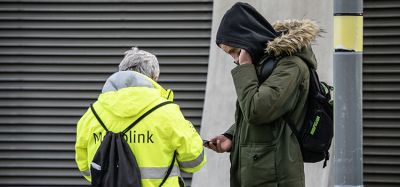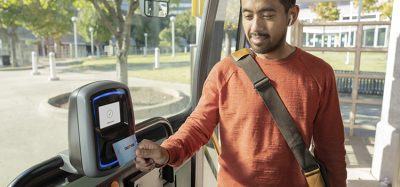Traffic enforcement in the digital age
- Like
- Digg
- Del
- Tumblr
- VKontakte
- Buffer
- Love This
- Odnoklassniki
- Meneame
- Blogger
- Amazon
- Yahoo Mail
- Gmail
- AOL
- Newsvine
- HackerNews
- Evernote
- MySpace
- Mail.ru
- Viadeo
- Line
- Comments
- Yummly
- SMS
- Viber
- Telegram
- Subscribe
- Skype
- Facebook Messenger
- Kakao
- LiveJournal
- Yammer
- Edgar
- Fintel
- Mix
- Instapaper
- Copy Link
Posted: 6 December 2006 | Patrick Troy, Head of Traffic Enforcement, Transport for London (TfL) | No comments yet
Effective traffic management and compliance with traffic and parking controls are integral to maximising the capacity of the road network – and nowhere is this more true than in London. The Mayor of London, Ken Livingstone, has made ‘keeping London moving’ one of the primary objectives of his Transport Strategy. So just how can optimum traffic flow be achieved on a road transport network on which 26 million journeys are made every day?
TfL is responsible for 580km of road in the capital – the Transport for London Road Network (TLRN) or red route – and these roads carry 35% of London’s traffic. Ensuring that congestion does not clog up the whole network has required some innovative thinking and the latest developments in traffic enforcement will see the introduction of digital solutions that will provide more flexible, reliable and productive camera enforcement systems.
Effective traffic management and compliance with traffic and parking controls are integral to maximising the capacity of the road network – and nowhere is this more true than in London. The Mayor of London, Ken Livingstone, has made ‘keeping London moving’ one of the primary objectives of his Transport Strategy. So just how can optimum traffic flow be achieved on a road transport network on which 26 million journeys are made every day? TfL is responsible for 580km of road in the capital – the Transport for London Road Network (TLRN) or red route – and these roads carry 35% of London’s traffic. Ensuring that congestion does not clog up the whole network has required some innovative thinking and the latest developments in traffic enforcement will see the introduction of digital solutions that will provide more flexible, reliable and productive camera enforcement systems.
Effective traffic management and compliance with traffic and parking controls are integral to maximising the capacity of the road network – and nowhere is this more true than in London. The Mayor of London, Ken Livingstone, has made ‘keeping London moving’ one of the primary objectives of his Transport Strategy. So just how can optimum traffic flow be achieved on a road transport network on which 26 million journeys are made every day?
TfL is responsible for 580km of road in the capital – the Transport for London Road Network (TLRN) or red route – and these roads carry 35% of London’s traffic. Ensuring that congestion does not clog up the whole network has required some innovative thinking and the latest developments in traffic enforcement will see the introduction of digital solutions that will provide more flexible, reliable and productive camera enforcement systems.
Background
Once parking enforcement was decriminalised, London’s boroughs were given the ability to employ parking attendants rather than rely on police officers to enforce parking regulations. Although this was very successful it did not solve the problem of “drive-aways”, where motorists make brief stops in restricted areas, creating congestion or a road safety hazard. In these instances parking attendants did not have time to serve Penalty Charge Notices (PCNs) before the vehicle drove away, as was required in the legislation.
At around the same time the reliability of journey times on London’s buses was becoming a cause for concern. When the Mayor was elected he set targets for increasing patronage of the bus network and reducing private car use. In order to achieve this, buses needed to be given priority on the roads. However, simply installing dedicated bus lanes couldn’t guarantee reliability as motorists still drove and stopped in them illegally and manual enforcement (flagging them down and issuing a PCN) would cause even more delays. The solution became clear – camera enforcement.
Today
TfL is now responsible for the largest camera enforcement operation in the country, using bus-mounted, static roadside and CCTV cameras which record footage of potential contraventions to video tape.
Three different types of analogue cameras are in use by TfL at present – bus mounted, roadside and CCTV cameras.
Bus mounted cameras are installed at the front of the bus in order to capture images of the rear number plates of vehicles either driving or stopped in the bus lane. There are 1,045 bus mounted cameras in operation in London today.
Roadside cameras work in a similar way, but because they are static they are used just to record the bus lane during the hours of operation. The system has been refined to enable a ‘tag’ to be placed on the video to indicate when a vehicle is about to come into view to make it quicker to analyse. TfL has around 50 static roadside cameras deployed across London.
CCTV cameras are a more flexible tool as they can be used to enforce multiple contraventions such as banned turns, yellow box junctions or driving the wrong way down a one-way street. At present there are about 300 CCTV cameras in operation in London and plans are to increase this by about 75 each year.
Effective enforcement has so far contributed to:
- Passenger time savings, resulting from faster buses in bus lanes, worth £25 million per annum
- Buses travelling 12.6% faster in bus lanes compared to on normal roads
- Pedal cycle usage increasing by 80% over five years of monitoring at a roadside camera site.
However there are some significant disadvantages to this analogue-based system including the need to manually collect tapes from the cameras, time-consuming reviewing of the tapes to identify contraventions – and the need for a lot of storage space!
Going digital….
The rapid developments in digital technology over the past decade have paved the way for smarter traffic enforcement systems. TfL has pioneered the development of a new Digital Traffic Enforcement System (DTES) encompassing a range of digital technologies. The components of the new system include Automatic Vehicle Location (AVL), Automatic Number Plate recognition (ANPR), cameras and communications – integrated for the first time.
Contraventions such as driving in a bus lane, moving traffic contraventions and red route stopping are captured and an ‘evidence pack’ is produced for each incident, which can then be transmitted to a processing centre and checked by an enforcement officer. The cameras will only record when triggered by a contravention – greatly improving the efficiency of the enforcement operation.
A contravention is captured and managed as follows:
- Using ANPR to trigger the camera, the system identifies that a traffic contravention may be taking place (such as a motorist driving in a bus lane, stopping in a yellow box junction or parking in a restricted area)
- The camera documents the data (the ‘evidence pack’) showing the captured contravention securely on its hard drive. The recording spans several seconds before and after the contravention. In the case of bus-mounted and other mobile cameras, it also includes a location log provided by AVL
- The data is subsequently encrypted and transmitted to the processing centre
- The encrypted data is written to a DVD and physically transferred from one computer to another, before being unencrypted to ensure maximum data security
- The enforcement officer reviews the ‘evidence pack’ for any mitigating circumstances and concludes whether the registered keeper should receive a Penalty Charge Notice (PCN).
Some of the elements of DTES are already up and running, including:
‘Smart’ car Vehicle Mounted Camera (VMC)
The ‘Smart’ car is being used to protect the Red Route from unlawful stopping. It is equipped with ANPR, enhanced Global Positioning Systems (GPS) and DVD recording facilities.
Portable Enforcement Camera (PEC)
The PEC complements the existing network of fixed CCTV cameras, offering greater flexibility and responsiveness as cameras can be fixed to a site in a matter of minutes. The cameras have a wireless link to a control vehicle from which an enforcement officer can monitor activity.
PDA Parking Enforcement Solution
Personal Digital Assistants are now being used by London’s 850 Traffic Wardens and Traffic Police Community Support Officers. The PDAs have built in digital cameras, street mapping capability and Bluetooth technology enabling more efficient issuing of PCNs as well as improved back office data management.
The future
The DTES will not only provide benefit to the TfL Red Route network of roads and, it is hoped, it will provide a blueprint for traffic enforcement across the UK.
Related topics
Security & Crime
Issue
Issue 4 2006
Related organisations
Transport for London (TfL)
Related people
Patrick Troy







